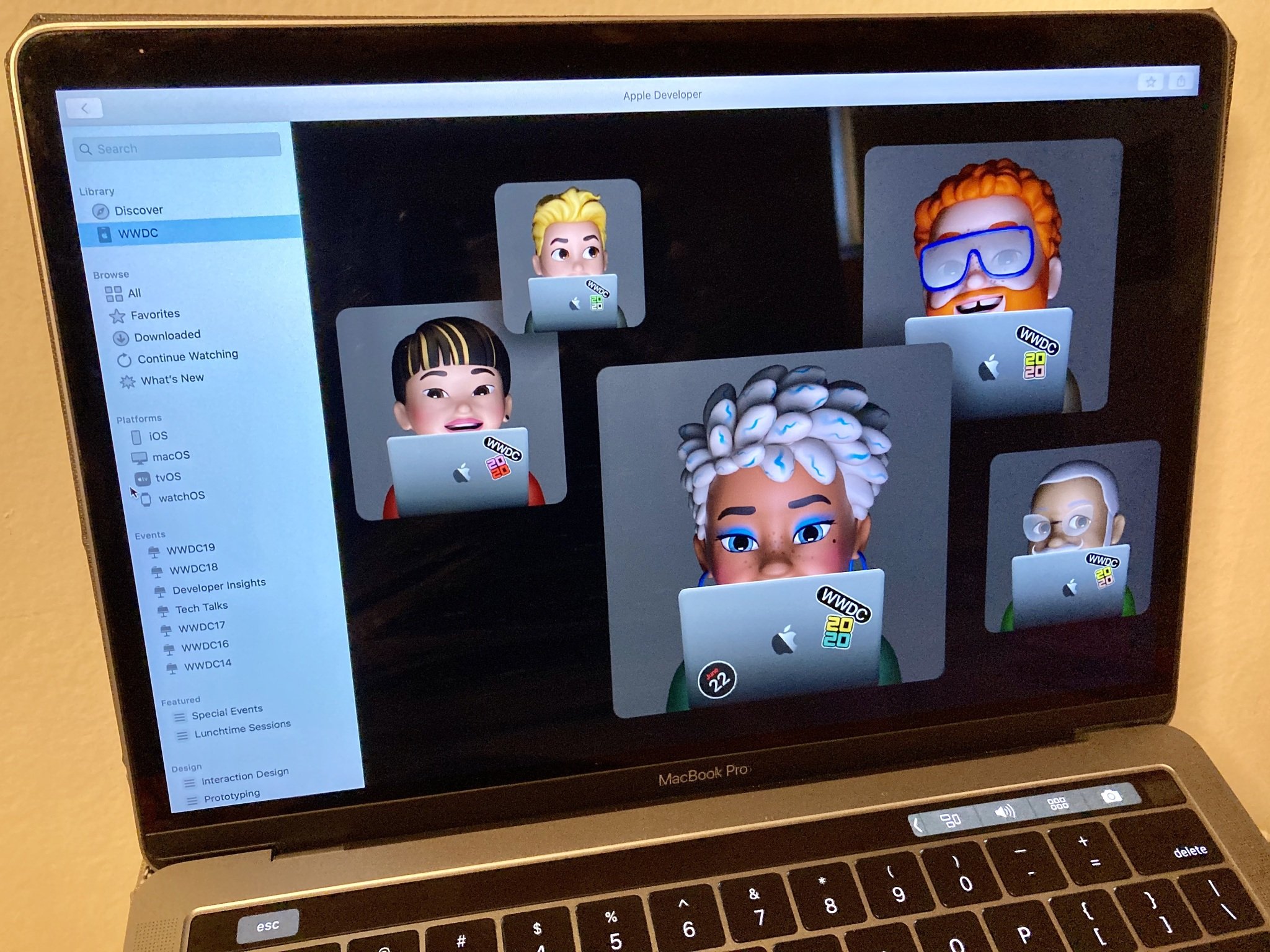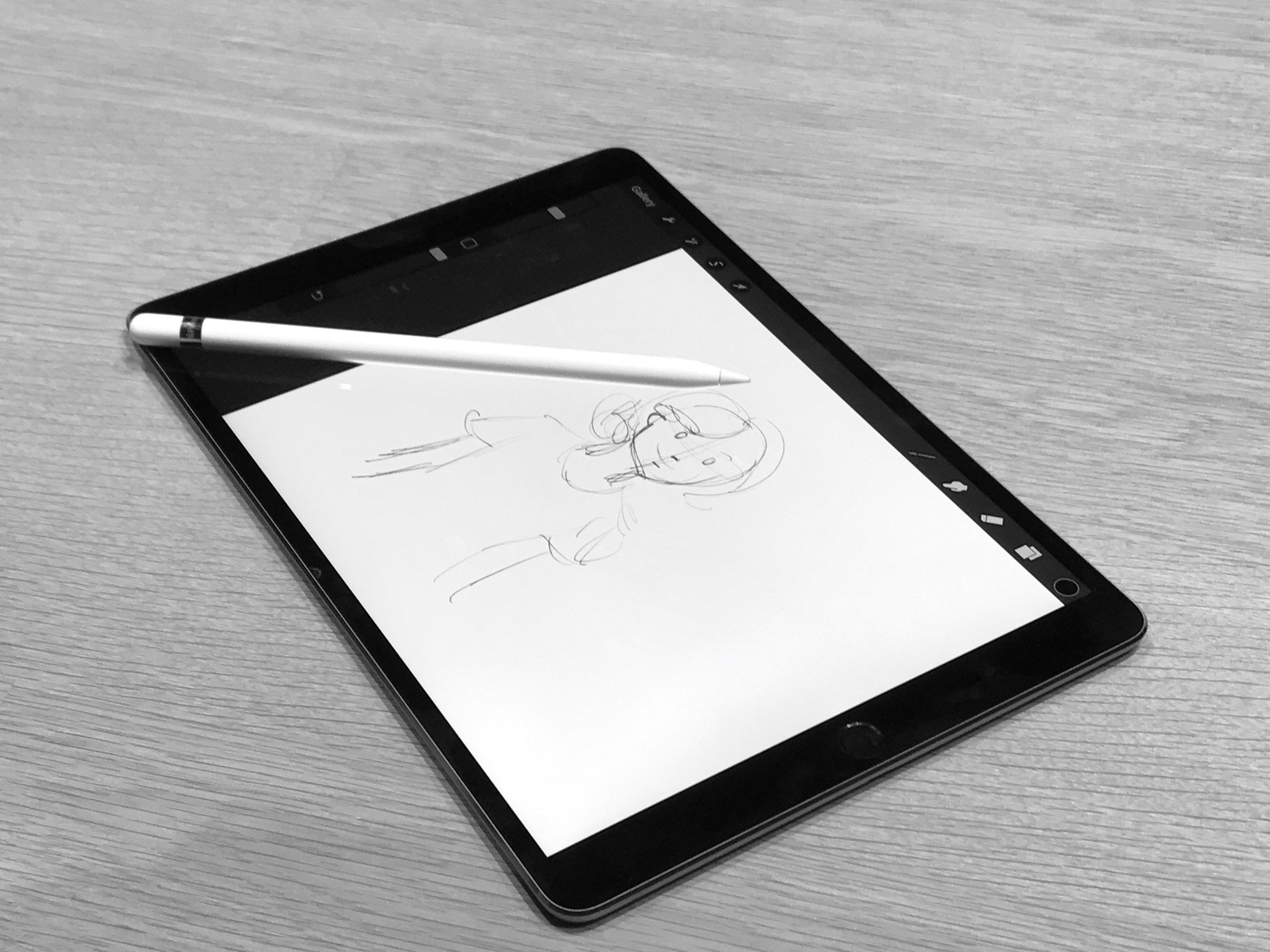The iPad Pro convinced me to love the iPad line again: It gave us the Apple Pencil and Smart Connector, and convinced me to go full-time on my iPad for over 9 months. But it wasn't without flaws: the line was weirdly feature-segmented as the 9.7-inch supplanted the 12.9-inch in some — but not all — new features, and iOS desperately needed an iPad update beyond a few hardware keyboard shortcuts. And I found myself missing my portable Mac experience over time — enough to pick up a 13-inch MacBook Pro last fall.
The new iPad Pro both fixes the segmentation of the Pro line and pushes the whole iPad experience forward. Even though it won't ship with iOS 11 when it launches next week, the new iPad Pro's hardware features alone are enough to make me consider upgrading my 9.7-inch tablet after just a year.
The bigger display on the 10.5-inch and 12.9-inch tablets is, of course, appealing, as is the Wide Color (P3) gamut and True Tone being adopted across both models. The displays are also brighter and more anti-reflective, both of which were immediately evident when viewing the tablets under the glare of the hands-on spotlights.
But the biggest deal here is ProMotion — a feature that sounds a bit like a sports drink and can't easily be described to the average user. Apple doesn't even mention it on its iPad Pro website overview, choosing instead to focus on the marketable part of the feature: the tablet's better screen refresh rate.
So let's talk about what ProMotion is, really. Yes, it offers a better screen refresh rate — 120Hz versus the traditional 60Hz of most displays — but what that translates to is super smooth motion when you're playing games and working visually. Let me be clear: This isn't your average "motion smoothing" feature, which TV manufacturers do to try and improve the frame rate of sports and video games. This is a true 120Hz refresh rate. Games, and AR experiences in particular, look incredible.
My real excitement, however, boils down to how it affects the iPad creative experience. Faster screen refresh rates help with latency. Lower latency means that every motion you do — whether that's swiping with your finger or drawing with Apple Pencil — feels snappier and more "real."
With Apple Pencil, the difference is notable: I spent nearly fifteen minutes happily sketching away in Procreate during our hands on time, an app where I've previously never started a drawing. Procreate is, hands down, one of the most powerful iPad programs out there — but I've never been able to use it for simple sketching because its complex array of brushes had just a tad too much latency for me to feel comfortable with them. The new iPad Pro (and an impending Procreate update to take advantage of it) fixes that problem.
The lag is non-existent. The brushes feel smoother, faster, and look better than ever on that screen. Tool switching and complex rendering happens in a flash. I had the pleasure to watch illustrator and calligrapher Seb Lester draw in iOrnament at the event and watched him create complex (and beautiful) geometric renderings in seconds.
Some guy called Seb Lester is in the new iPad Pro ad. Pretty surreal. https://t.co/iUhUUmFPeRSome guy called Seb Lester is in the new iPad Pro ad. Pretty surreal. https://t.co/iUhUUmFPeR— Seb Lester (@SebLester) June 6, 2017June 6, 2017
Latency is a big deal for digital art, and it was one of Microsoft's key boasts in calling its new Surface and Surface Pen "the fastest digital pen on the planet." 21 milliseconds of latency is pretty darn good, especially when measured against the original iPad Pro's 41 milliseconds; the new iPad Pro, though, ups that reaction time even more, with a claimed 20ms latency for Apple Pencil.
We'll do some in-depth testing later this month to see how accurate those claims are, but in the hands-on, I certainly believe it — everything just feels faster and more natural. And an extra bonus: ProMotion smartly scales refresh rates depending on what you're doing with the iPad, both to save battery life and make everything look as good as possible.
That anti-reflective coating I mentioned above is also an interesting quirk for artists considering the new iPad Pro. Though the process is reportedly the same as the prior generation, I noticed a distinctly grippier feel when writing or drawing with the Pencil. It's still not paper, but it's a distinct improvement over the sometimes slippery glass feeling of the original iPad Pro models.
I've written nearly a thousand words here, and I haven't even mentioned the speediness of the new A10X chip or the many, many great features coming to all iPads post-iPad Air with iOS 11. That's how exciting I find ProMotion. Is it as important to the average user? Perhaps not as obviously, but the inherent speed in interactions should benefit everyone who uses the iPad Pro, even if you never touch an Apple Pencil.
Overall, though, I'm very excited to get some more hands-on time with the new iPads when they ship next week. Coming off the heels of Apple's entry-level 9.7-inch iPad release, the iPad line at last feels unified — one entry-level iPad, and two pro-level sizes — with features that scale across the board. The new Pros take their place at the head of the iPad table, and their hardware features are more than enough to deserve that spot.

○ Everything about WWDC 2020
○ WWDC 2020 remote lineup
○ Download the Apple Developer app
○ iOS/iPadOS 14
○ macOS 10.16
○ watchOS 7
○ tvOS 14
○ Discussion forums
Serenity was formerly the Managing Editor at iMore, and now works for Apple. She's been talking, writing about, and tinkering with Apple products since she was old enough to double-click. In her spare time, she sketches, sings, and in her secret superhero life, plays roller derby. Follow her on Twitter @settern.


